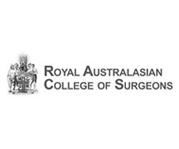Frequently Asked Questions - FAQ's
Why is arthroscopy necessary?
Diagnosing joint injuries and disease begins with a thorough medical history, physical examination, and usually X-rays. Additional tests such as an MRI, or CT also scan may be needed. Through the arthroscope, a final diagnosis is made which may be more accurate than through "open" surgery or from X-ray studies.
What are the joints that can be viewed with an Arthroscope?
Although the inside of nearly all joints can be viewed with an arthroscope, six joints are most frequently examined with this instrument. These include the knee, shoulder, elbow, ankle, hip, and wrist. As engineers make advances in electronic technology and orthopaedic surgeons develop new techniques, other joints may be treated more frequently in the future.
What are the conditions that can be treated by arthroscopy?
Some problems associated with arthritis also can be treated. Several disorders are treated with a combination of arthroscopic and standard surgery.
Disease and injuries can damage bones, cartilage, ligaments, muscles, and tendons. Some of the most frequent conditions found during arthroscopic examinations of joints are:
Inflammation
Synovitis - inflamed lining (synovium) in knee, shoulder, elbow, wrist, or ankle.
Injury - acute and chronic
Shoulder - rotator cuff tendon tears, impingement syndrome, and recurrent dislocations
Knee - meniscal (cartilage) tears, chondromalacia (wearing or injury of cartilage cushion), and anterior cruciate ligament tears with instability
Wrist - carpal tunnel syndrome
Loose bodies of bone and/or cartilage - knee, shoulder, elbow, ankle, or wrist
What is rotator cuff?
The rotator cuff is a band of muscles that surround the joint formed by the upper arm bone or humerus that connects to the shoulder blade or scapula. The rotator cuff is stiff enough to hold the joint together, but is also flexible enough to allow the arm to reach and lift.
Rotator cuff injuries are common among baseball pitchers, tennis players and other athletes who frequently exert an overhand throwing or swinging motion. Non-athletes who engage in frequent lifting or reaching activities, such as stacking cans on a high shelf, can also develop rotator cuff problems.
What causes shoulder problems?
Most shoulder problems are the result of overuse or traumatic injury. Athletes who participate in contact sports, such as hockey or football, often suffer shoulder injuries. Frequent lifting and repetitive arm rotation can also cause wear and tear on the shoulder. Inflammatory diseases such as arthritis and bursitis may develop over time.





